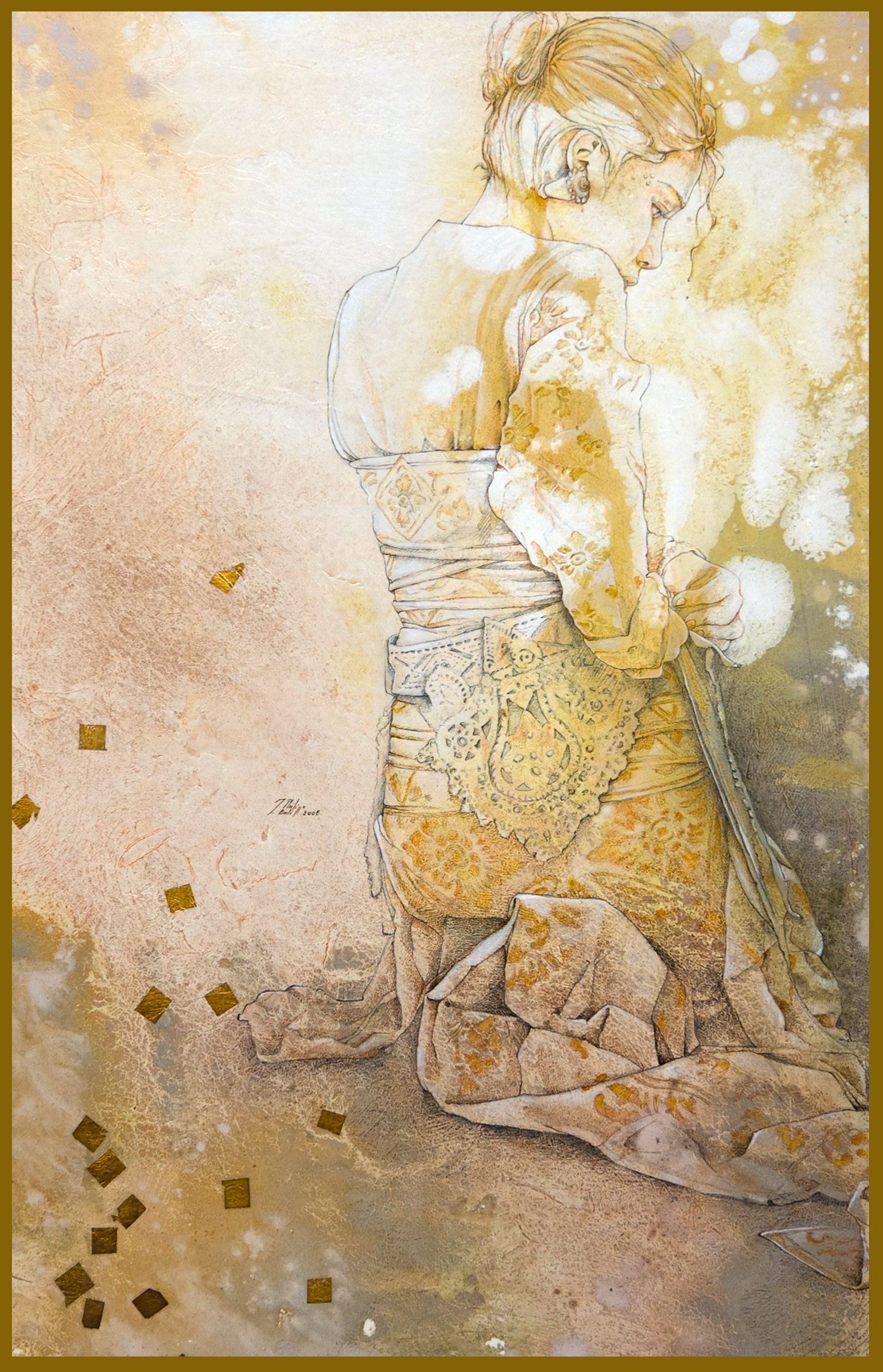Jakarta Post, March 08, 2009.
French artist brings women’s dual lives to canvas
Agustinus B. da Costa, The Jakarta Post, Jakarta
Having looked at the 23 paintings by Bali-based French artist Jean-Phillipe Haure, one is left with mixed feelings, ranging from melancholic to proud.

Most of the works depict Balinese women. They are traditional female dancers from the Abianbase village of Gianyar. Shown in several poses, some women are in beautiful dance costumes, some others in daily worn-out dresses. There are striking differences in how he portrays young women and old ones. The young women are pictured beautifully with flowers, dancing ornaments and detailed traditional costumes, while the older women are depicted with detailed wrinkles.
In addition to being the island of the gods, it seems Bali should also be billed as the land of thousands of inspirations, because from a village alone, Haure gets profound impressions that he can retell through his canvas. He’s mostly impressed with the tradition: dancing. In Bali, he says, dancing is the tradition that is passed on from one generation to the next. It’s an important part of a religious ritual to worship the gods.
He says parents send their girls to study dancing at nearby temples. Every temple has its dance group. The dancers do not only perform for functions held at the temple. Sometimes they perform at social events. At other times, they dance to amuse the people at traditional concerts, odalan, at the temple.
Haure says he loves to see dance performances, but what is most interesting for him are the behind-the-stage preparations: when the girls are bustling around with their costumes and ornaments, and putting on makeup. He tried his best to depict the moment.
“The dancers get stressed, tense, anxious, while awaiting their turns. But they still move forward to the stage.”
Being in close proximity, he says that he can see there is a beauty in the transition between the dancers’ daily lives and their performance on the stage. To him, it is amazing to see how people change their roles or personalities.
“This is a metaphor for life itself. Human beings are always trapped in the moment of transition. This moment is very stressing. But we just have to move forward.”
Woman at work is another dominant theme in his paintings. He portrays the daily lives of real people. He knows them well because he sees them and lives with them.
“When I lived with a Balinese family, the domestic economy was handled by the women. They also reigned over the kitchen domain. That’s why we see women working in construction projects or manual labor around their houses,” Haure says.
“But they never complain about it. They never see it as a big burden.”
In Balinese tradition, women have their own freedom to choose whether they want to work in the domestic sector (sadwi) or in the public sector (brahmawadini).
“He makes a strong and detailed sketch of the human body and the pattern of their traditional outfits,” art enthusiast Edi Purnomo says of Haure’s works.
But on the other side, Edi says Haure also gives his paintings an abstract background, monochrome and pastel. The haze is an expression of his emotion, like the composer trying to figure out the sounds of music from the abstract world.
Born in Orleans, France, in 1969, Haure went to the Boulle School of Art in 1983. In 1989, he worked on the restoration of national French furniture and joined the monastery of Saint Benoit-sur-Loire. The French government appointed him as a social worker to help boost the Hasta Karya Indonesian School of Art in Gianyar, Bali.

